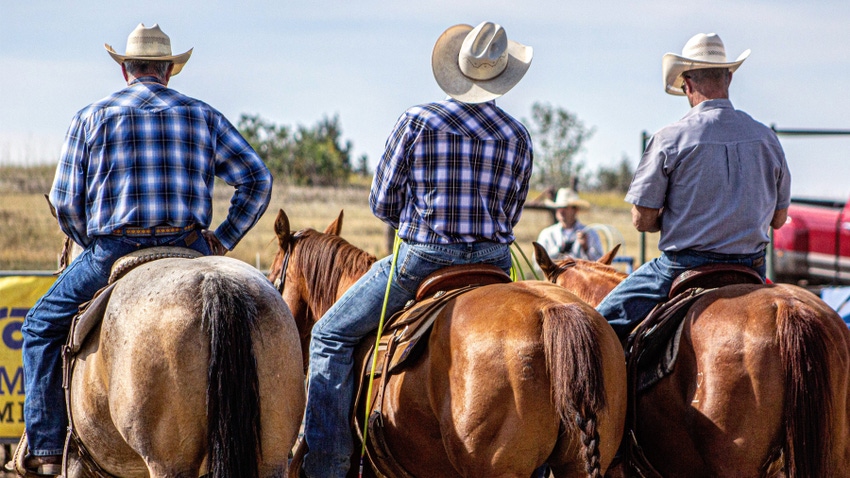Size up your saddle for all-around comfort
Ensure your Western saddle fits you and your horse properly for a pleasurable ride.

From ranchers spending long days in the saddle to weekend recreationists riding the trail, there’s nothing like an ill-fitting saddle to spoil the ride — either a seat being too small, stirrups too short or long, or those bars in the seat being uncomfortable. If these irritants diminish the rider’s comfort, just imagine how bad the wrong fit of a saddle can make your equine partner feel.
An improper saddle fit can cause a rider’s weight to be distributed unevenly, causing pressure points and soreness for the horse. A poorly fitted saddle can also contribute to behavioral issues, such as bolting, rearing or even bucking when saddled. Riders may notice horses becoming “cinchy” when being saddled, biting or exhibiting antsy behavior when the saddle is tightened.
Valley Vet gives these tips to ensure a good-fitting Western saddle for both horse and rider:
Start with right saddle pad. A solid foundation in the right saddle pad can help fix any minor fit issues in the saddle. With a new saddle pad costing under $300, as opposed to a saddle that can cost upward of $3,000, investing in a quality pad is an economical choice to adjust saddle fit.
Pads that are 100% wool can wick away sweat and avoid hot spots under the saddle while providing cushion to your partner’s back. Thickness of the pad you select depends on how you use your horse, and a good rule of thumb is to measure the length of your saddle and add 2 to 3 inches. That gives you the ideal length for a wool saddle pad.
Evaluate your current saddle. When you saddle up next, take a minute to observe how the saddle sits. If the saddle sits level on the back, with bars that do not pinch, you probably have a good saddle fit. If the front of the saddle sits atop the horse’s withers, it is too narrow and pinching will likely occur. If the saddle is too wide, you might notice the saddle resting low in the front with the gullet resting on the withers.
Check out your cinch. Selecting a cinch depends on the animal’s size as well as your discipline. Valley vet says the best way to measure your horse for a cinch is to saddle your animal, take a white string and tie it to the saddle’s front D ring. From here, mark right under the knot on the D ring. Run the string under the horse and attach it to the opposite D ring. There should be no slack in the string, and make another mark under the same knot.
The optimum distance from D ring to cinch is 8 inches, so subtract 16 inches from the measurement marked on the string to find the best size cinch. With mohair, neoprene or nylon cinch options, you can easily select your preference. Keep in mind that materials other than nylon will stretch over time.
If in doubt, call an expert. Even when walking through these steps to determine saddle fit, working with a knowledgeable expert can help confirm your horse’s saddle fit. Your local saddle maker or tack shop could be a good starting point to assist you in evaluating fit.
Keep you and your partner comfortable through your time in the saddle with these tips and enjoy your ride for years to come.
Read more about:
HorsesAbout the Author(s)
You May Also Like





